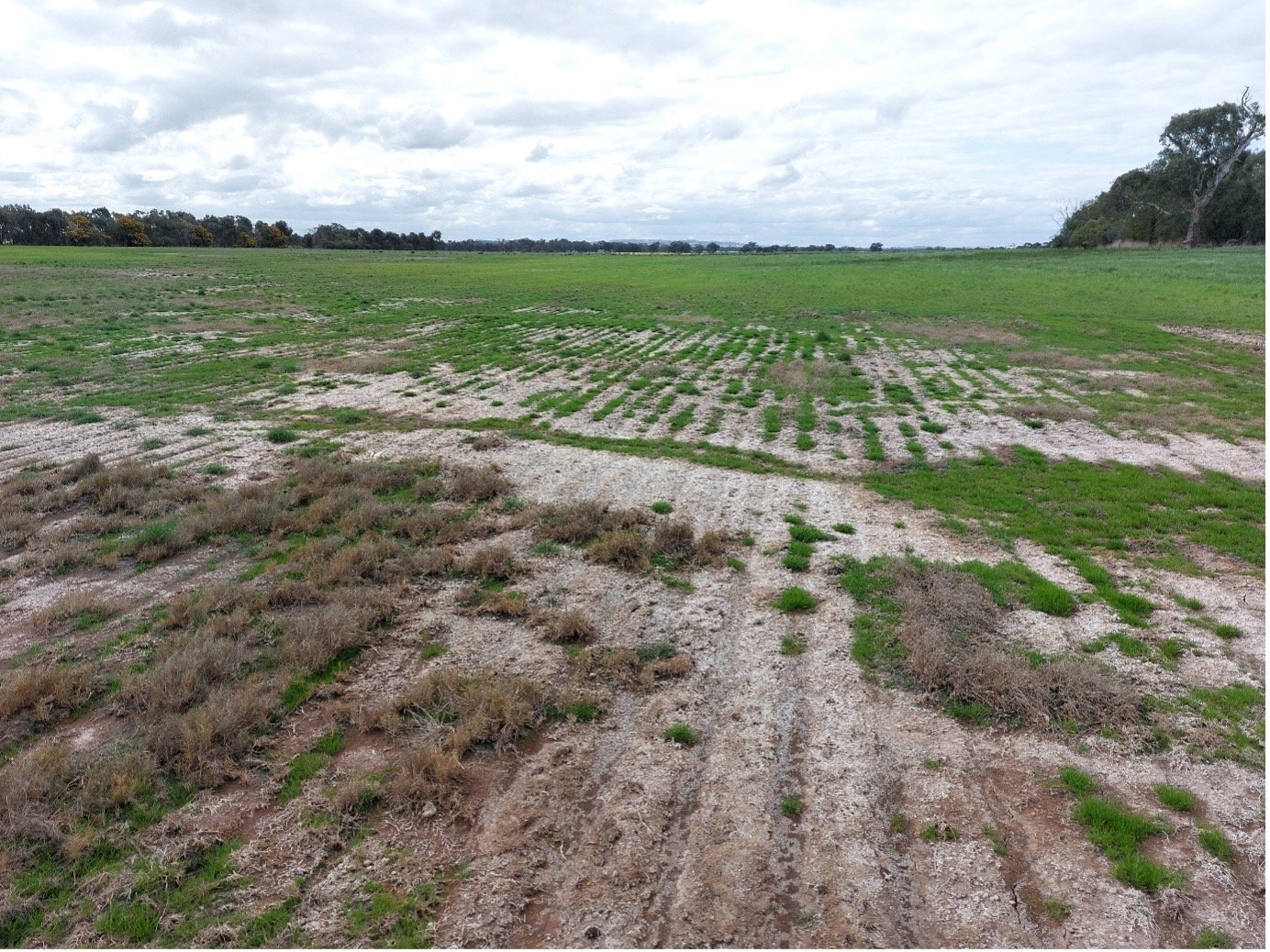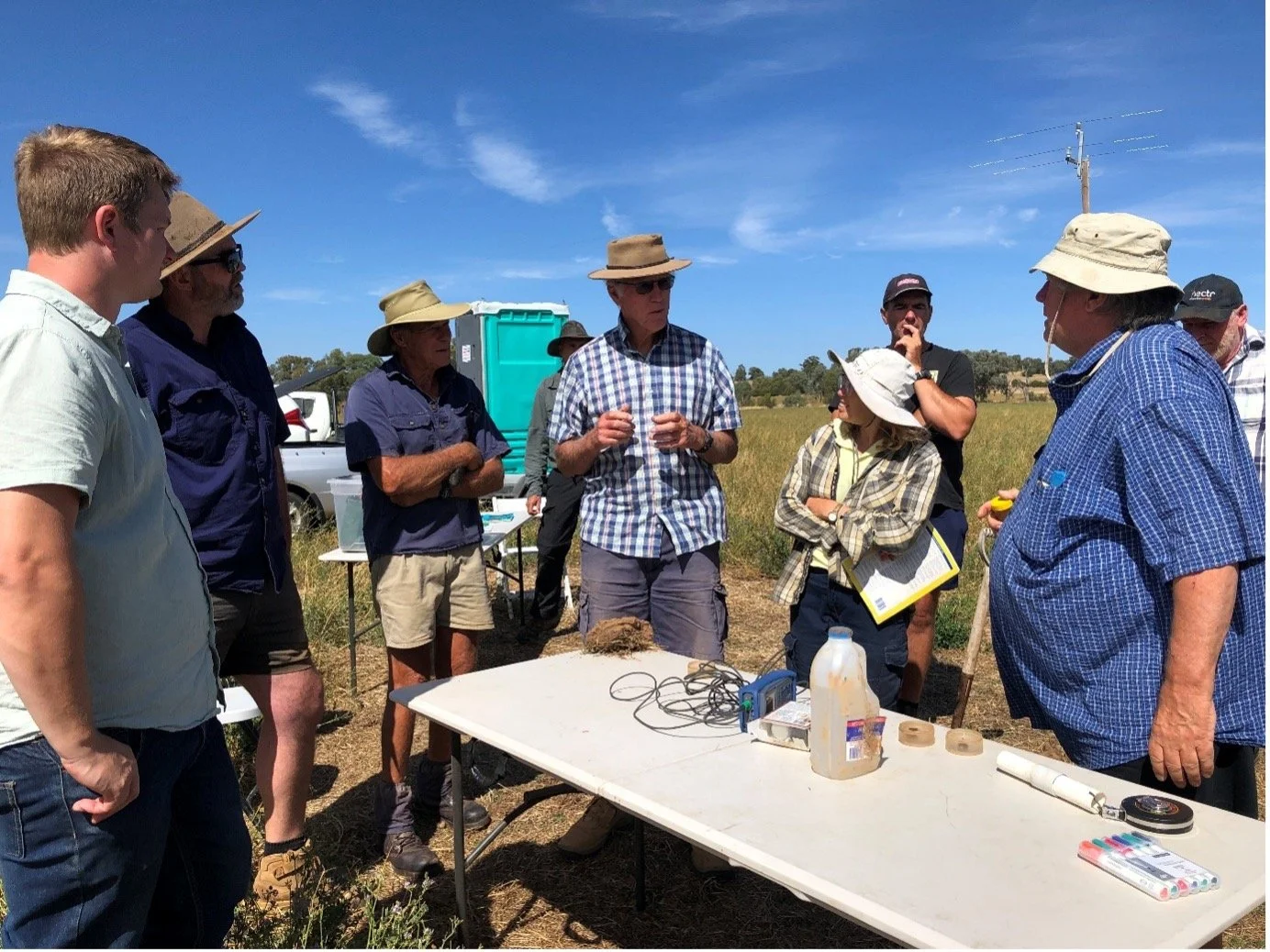West Hume Landcare Secures $376,000 to Tackle Dryland Salinity
West Hume Landcare Secures $376,000 to Tackle Dryland Salinity in the Eastern Murray Catchment
West Hume Landcare (WHL) has received over $376,000 in funding through the Australian Government’s Climate-Smart Agriculture Program under the Natural Heritage Trust to lead a significant new project addressing dryland salinity in the Eastern Murray Catchment.
The three-year project, titled “Linking land management, dryland salinity and soil health in the Eastern Murray Catchment,” is a collaborative initiative involving West Hume Landcare, Holbrook Landcare Network, Charles Sturt University, Murray Local Land Services and NSW Department of Climate Change, Energy, the Environment and Water (DCCEEW) – Basin Salinity Program.
Dryland salinity can have severe impacts on farm production
“As one of only 9 recipients of this grant, Australia-wide, we feel very grateful to receive support to continue our important work tackling salinity with our landholders and partners. Dryland salinity is one of the worst land degradation issues in Australia, and our region is particularly at risk due to its underlying geology, topography, and climate,” said Rob Cook, WHL Project Officer.
The project will combine research, on-ground monitoring and practical demonstrations to improve understanding of:
How land use changes influence groundwater movement and salinity expression
The impact of salinity on soil health and productivity
Practical land management actions that can mitigate salinity’s effects
Allan Nicholson (NSW DCCEEW) describing soil and water
salinity assessment at “Nyari”
Nick McGrath, Project Officer with Holbrook Landcare Network, said extending the study area into the Holbrook region will broaden the project’s reach.
“This expansion allows the research to apply across more of the Eastern Murray Catchment, including higher rainfall areas,” he said.
Allan Nicholson, Principal Salinity Officer with the NSW DCCEEW Basin Salinity Program, highlighted the importance of data collection in non-irrigated regions:
“Filling the gap in groundwater data is an issue across the NSW Murray Darling Basin, as scant groundwater height and salinity information is being collected outside irrigation and production areas”.
West Hume Landcare is uniquely positioned for this work, with one of the most extensive groundwater monitoring datasets in a non-irrigated region, dating back to the early 1990s.
“Our landholders have a long-standing commitment to monitoring salinity with a large network of piezometers. This data archive is a rare asset in dryland areas,” said Kathie Le Busque, WHL Executive Officer.
Jono Schulz (WHL Chairperson) preparing to assess
soil salinity at “The Elms”
The Geospatial research component, led by Associate Professor Ana Horta from Charles Sturt University, will focus on linking historical groundwater trends with land use change, delivering insights into potential land management that can reduce the impact of salinity in our landscape.
“Understanding the connection between land management and what’s happening below ground is key to reducing salinity impacts,” said Dr Horta.
WHL Chairperson Jono Schulz said that landholder involvement will be central to the project’s success.
“Engagement with landholders who face the daily threat of salinity is vital. Providing timely, localised, evidence-based information empowers them to make better decisions for the health and productivity of their soils”
Media Contact:
Rob Cook
Land and Water Management Project Officer, West Hume Landcare
T: 0427 873 604
This project is supported by the Australian Government through funding from the Climate-Smart Agriculture Program under the Natural Heritage Trust.




